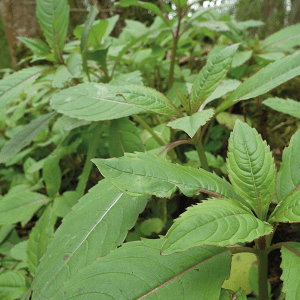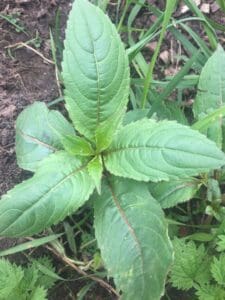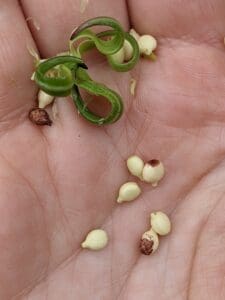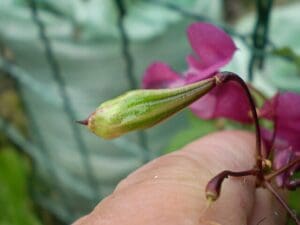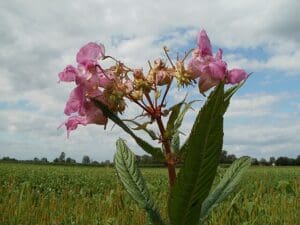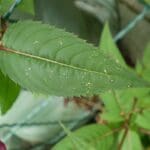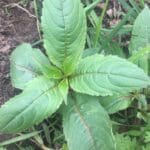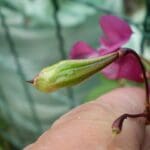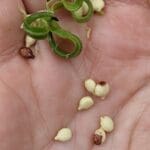Himalayan Balsam / Spring / Summer / Edible
Common Names
Himalayan Balsam, Indian Balsam, Bobby Tops, Copper Tops, Gnome’s Hatstand, Ornamental Jewelweed, Policeman’s Helmet, Kiss-me-on-the-Mountain
Botanical Name
Impatiens glandulifera
Scientific Classification
Kingdom – Plantae
Order –Rosales
Family – Rosaeae
Physical Characteristics for Himalayan Balsam
Himalayan Balsam is an incredibly invasive species that is often found spreading up riverside edges, however, it’s also a brilliant edible and has edible, leaves, shoots flower & seeds.
Leaves
The Leaves are lanceolate with serrated edges and reddish veins running through it. They are smooth, not furry, and are arranged in threes, which distinguishes them from many lookalikes.
Stems
Tall stems reaching up to 2m in height. The stalk is has a reddish tinge.
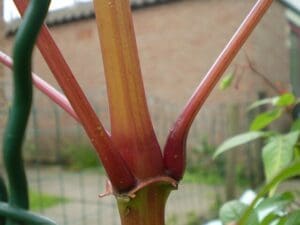
Flowers
The flowers are pink or white and shaped like helmets
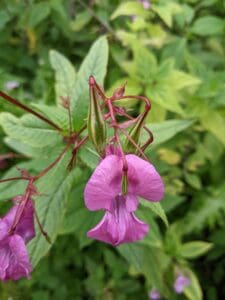
Seeds
The seed pods explode when gently touched.
Habitat
Most commonly found along waterways, but can grow away from water. It was introduced to the UK in 1839 as a garden plant
Known Hazards
This plant is a non-native invasive and eradication programmes are in place in many parts of the UK. Some people have displayed allergies to Himalayan Balsam’s pollen.
Could be Confused with
The plant is very distinctive, so it would be difficult to confuse with other species. There’s potential if you just had the flowers and nothing else on the plant you could confuse it with Foxgloves (Digitalis Purpurea), however Foxglove leaves are hairy which Balsam are not. The leaves on their own could be confused with various members of the mint family, but those are always arranged in opposite pairs while Balsam leaves are in threes.
Edible Uses
The seedlings, young shoots, leaves, flowers and seeds are all edible. The seeds give a nice crunch and texture to salads, while the flowers and young shoots can be made into jams.
The hollow stalks can be used as a straw.
When harvesting the seeds, carefully place a carrier bag over the tops of the plants and close the neck of the bag with your hand. This action alone should be enough to cause the seed heads to explode and catch all the seeds. Remember to tip the bag right way up before removing your hand.
Notes on Herbal uses
The flowers have cooling properties, and the leaves have been used to soothe burns. The seeds are diuretic, and the root juice treats hematuria (blood in the urine).
Extra notes from the Foragers
Notes below from:
Curtis Wright
Administrative Officer
Animal Plant Health Agency (APHA)
The transportation of seeds or whole plants is an offence under the Invasive Alien Species (Enforcement and Permitting) Order 2019 in England and Wales and Section 14AA of the Wildlife and Countryside Act in Scotland. This means that no seeds or plants should be removed from the site where they currently grow, and sowing seeds or planting elsewhere either deliberately or accidentally would be a particularly serious offence.
Find out more on the APHA here
Impatiens is from the Latin for impatient, referring to how the seed pods burst open. Glandulifera means to have flowers with glands



